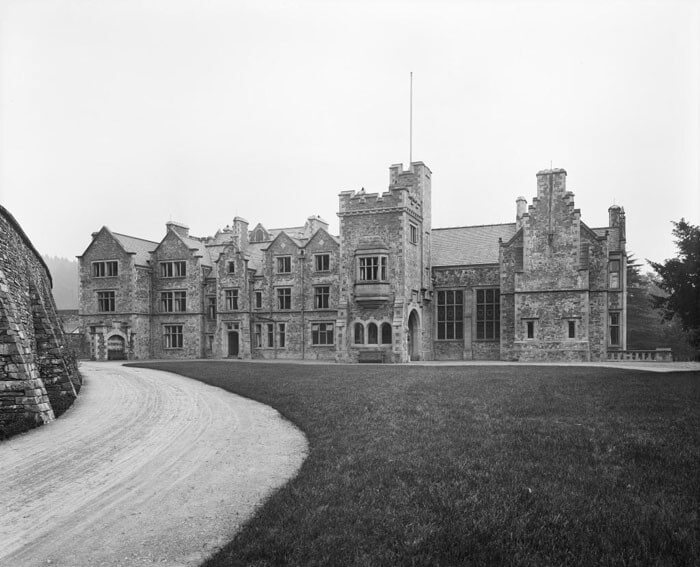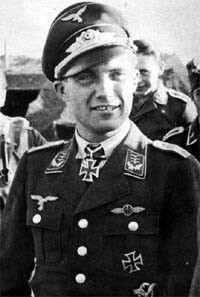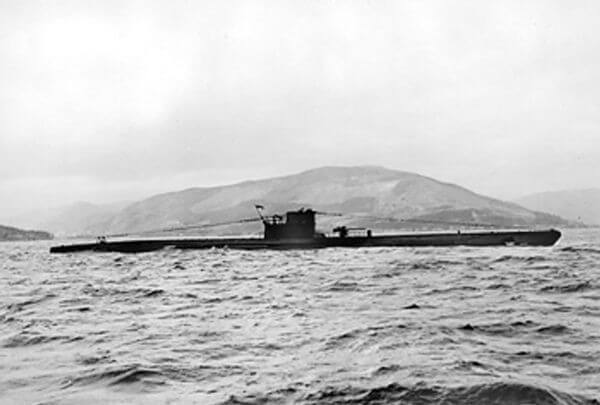German Ghosts In Haunted Grizedale Forest
A Historical Ghost Story

Photo by Vincent Guth on Unsplash
A Historical Ghost Story
On Friday, July 27 2001, I visited Grizedale Forest Visitor Centre, in Cumbria in Northern England, which is now an extensive forest park with sculpture trails managed by the Forestry Commission. I went with Claire, who was a psychic medium who had accompanied me on other trips to ghostly places. She was there to pick up any psychic emanations that there might be. I was there to do the more rational stuff.
We went at the invitation of Grizedale Arts Trust who wanted us to investigate rumours of ghosts within the buildings. At that time, we had something of a reputation locally as ghost hunters!
The day was warm and humid. There were lots of visitors about. The valley is densely forested, though photographs from the 1940s show that this was not always so. The buildings there looked like they had been put up between the late 1890s and about 1910, and were characteristic of a large, modern ‘home’ farm run directly by a landed or even aristocratic family. There were agricultural buildings, now converted to forestry and tourist use, as well as associated cottages and houses. Apart from that, the farm buildings are a few miles remote from the nearest village — Hawkshead.

Grizedale Hall (Wikipedia Commons)
Multiple Hauntings
The three main areas we were told were affected by ghosts were: the theatre and adjoining bar area; an old stable block, some distance from the main complex; and a cottage, which was at that time empty though it had recently had someone living there. The general information we received from Grizedale Arts Staff was that the complex had been used as a Prisoner of War camp during the Second World War. That the main building, Grizedale Hall, had been pulled down at the end of the 1950s.
Many people over many months, if not years, had felt the theatre to have an unpleasant air. Claire wasn’t told of anything because I wanted her to know nothing about the place as a kind of control. I was previously informed there were presences on the stage and at a particular place among the rows of seats. Footsteps had been heard in the Bar when no one was close enough to make them. The offices adjoining the theatre had been subject to bouts of repeated and concentrated failures of electrical equipment — faxes, computers, and photocopiers. There had also been ringing of phones with no one on the other end.
The Cottage also had an unpleasant air, and a recent resident had reported loud knocks on the door at about 2 am on more than one night.
The Stable Block had a room that was being used by an artist as a dark room. But she had felt something watching her and had eventually abandoned the room, which was otherwise perfect for her needs. Other information we were given was that a young German prisoner had hanged himself in the Camp and that some of the British guards had been mentally unstable and one had shot himself.
The Theatre and Bar
As soon as Claire entered the theatre, she started getting feelings. She told me she could see a dark figure hiding behind the curtain on the right side of the stage. He was tall — muscled but running to fat — with leather wristbands and a dark hood over his head with eye slits — very much like our idea of an executioner. There was a foul air to him, and he was watching another man — a young, thin man standing at the back of the theatre, near the lift.
This young man was staring at the Executioner, and there was tension between them.
Also sitting behind each other in seats E16 and D16 were two elderly ladies who, Claire said, were waiting for a show to start. They weren’t much interested in the two men and were reasonably recent in time.
Claire noted that there appeared to be a mismatch of era between the Executioner and Young Man. We went into the lift, which was very small and uncomfortably claustrophobic, and it deposited us down in a locked room, which had no working lights.
The staff let us out of the room into a storage area underneath the stage which had its own door to the outside. Claire was left alone here and came back with impressions of the Executioner fighting the Young Man and eventually killing him.
Later we returned to the Stage Area and concentrated on the Bar where footsteps had been heard. Claire was alone in the Bar until she called for me. She said, “I can’t understand it; they never ask for you.”
Then she got snatches of a song — a minstrel type man like a caricature was playing the mandolin and singing “I am the storyteller; my story must be told.”
Later, Claire suddenly said that the storyteller was German. I sat quietly there and asked Claire to tell them that if they wanted me to tell their story, I would. She said. “But can you write in that?” I nodded, I had just done a German Business course, and immediately, I knew that they wanted me to write in German.
I got a couple of impressions. I am generally not psychic and was very uncertain where they were coming from, whether from my imagination or from a spirit presence.
I got a few words — “verschliessen” which means “close”; “schiessen” meaning “shoot” and perhaps these two words were meant to be the same, and I had picked the first one up.
I also got the name “Otto” and a connection with a place called Schliesingen, which was somewhere in the East of Germany. I have not been able to find this place. There was a young man, whom I took to be Otto from Schliessingen and I felt that he was 23 years old. From then on a story unfolded itself in my mind.
The young man had been condemned to death, and the Executioner was a thought-form of his fears. Before he was executed, he took his own life by hanging himself from a beam in the theatre. He wanted desperately to go home but was frightened to leave the building and wanted me to guide him down the stairs. I did all of this — actually walking down the steps.
I had the impression that Otto was hesitant, and then, in my imagination, I saw him stumble and slump with a rope around his neck. The rope he had hanged himself on was holding him back.
I mentally cut through the cable and led him out into the fresh air where he disappeared into a mist then a star form. He lingered to thank me and then left.
I would stress that I knew nothing about the history of the place at that time, other than a rumour that someone had hanged himself in the Camp. If you check the historical section below, you will see that there are close similarities with something that actually happened at Grizedale, but specific vital details are different.
The Cottage
Claire got no impressions at all from the downstairs of the Cottage. When she went upstairs, she gave a sharp intake of breath, and a flood of information came through to her. She said that there was someone in the trees opposite watching us. He originated from about five hundred yards to the right (this would actually be about where the Stable Block is — see below).
This watcher was once in the Cottage in the room to the right as you go up the stairs. It seemed he was frightened or ashamed of that room as he wanted to shut the door and keep Claire out.
She then described him:
“Short black, unkempt hair. Very thin with a sharp face and nose and he looks underfed and mentally disturbed. He has a scar on his face by his ear, which comes down under his chin. He cackles. The name might be Gareth. There have been lots of people in that Cottage — not just Gareth. Gareth hides himself in the woods, and he’s carrying a padlock which he was waving at us — laughing. Like he was about to throw it.”
He was frightened of Claire one minute and then suddenly eager for her to see his notebooks.
“He has journals covered in a dense scribble with lots of underlinings and diagrams. It’s like the writing of a madman. Suddenly he begins singing a song from the Wizard of Oz — “Ding Dong The Witch is Dead”.
Is this a clue to his date? 1937 or so?
The Stable Block
We tried to get into the Stable Block, but at first, we couldn’t because despite the hundreds of keys we had none of them worked on the padlock that chained the gates. Claire felt this might have been the padlock that Gareth was waving as if he was taunting us that we wouldn’t be able to get in. We went back later with more keys. This time we managed to get into many rooms — but we couldn’t find the key to the most interesting one. When we went to the room next door, Claire said
“There’s something here. A blob of some kind. It’s in the next room.”
Try as we might we couldn’t get in. This room had paper up at the windows, and the Grizedale Staff explained that an artist had been using this room as a darkroom. It seemed perfect for her needs, but she complained of something being in there with her — watching her and eventually abandoned it. As we stood outside, Claire’s impressions about what it was were refined. At first, she thought that it was a horse. It certainly didn’t seem human. It was black and had big teeth. Then she suddenly realised that it was a wolf.
We couldn’t get into the room to investigate further.

Grizedale Forest (Wikepedia Commons)
The History of Grizedale
Grizedale means “Valley of the Pigs” in Norse, which indicates the land use at that time — 900 AD to about 1300AD. In Norman times the area of Grizedale Forest came under the ownership of Furness Abbey. The monks coppiced the woodlands to provide wood for charcoal, basket making etc. The fells were cleared of woodland by this date, and they were used for grazing sheep.
Henry VIII confiscated the land belonging to the Abbey during the dissolution of the monasteries. In 1614 James I sold the property at Grizedale and Dale Park to David Rawlinson. The new owner continued to coppice the woodlands to produce wood for charcoal. The charcoal went to the local “bloomsmithies”, which smelted iron. Most of the industry in the area was based on the produce from coppiced broadleaved woodlands.
Montagu Ainslee inherited the Grizedale Estate in the early 19th Century. He built a new hall at Grizedale, on the site of the present-day Hall car park.
In 1903 Harold Brocklebank bought the Grizedale Estate. The Brocklebank Family established the Cunard Line. They owned Irton Hall in west Cumbria as well — also haunted.
Brocklebank demolished the existing Hall and built a new one on the same site. In 1937, H Brocklebank sold the Grizedale Estate to the Forestry Commission including the Hall, Esthwaite Lodge, seven farms, 33 cottages, 1200 hectares of farmland and 500 hectares of woodland.
In 1957 Grizedale Hall was pulled down having served as a Prisoner of War camp during the Second World War. The Commission then managed Grizedale to produce timber for the country’s needs.
Wartime
Franz von Werra Grizedale Hall and its outbuildings were used as a prisoner of War Camp during the Second World War. During the War, the locals called it Hush Hush Hall.
The British Army called it №1 POW Camp (Officers) Grizedale Hall. It had the most significant concentration of German prisoner-of-war talent in wartime England. Gathered together were airmen, navigators, radio operators, and U-boatmen.

Franz Von Werra (Wikipedia Commons)
Franz von Werra
Swiss-born and German- raised Franz von Werra 1914–1941), shown in the accompanying photograph, lived a fascinating life in his twenty-seven years. A Luftwaffe pilot of a Messerschmitt 109 during the Battle of Britain in the early years of World War II, it was a prisoner-of-war who achieved legendary status, and the subject of a book and a movie several years after his death. The One That Got Away.
Oberleutenant Franz von Werra was shot down over Kent on September 5 1940. Following interrogation in Kensington Palace Gardens in London he was shipped north to a prison camp near Grizedale Hall in the Lake District, which at the time was the only camp in Britain for captured enemy officers.
On an escorted exercise march on October 7 with several other prisoners, he dived over a low stone wall. He remained at large until he was spotted by a shepherd on October 12 and was recaptured. Following a punishment of solitary confinement, von Werra was shipped to another camp, Swanwick, near Nottingham. He tried to escape from there and was eventually sent to Canada, from where he managed to escape and flee into the then neutral USA.
Franz von Werra was the only prisoner-of-war captured in Great Britain during World War II who escaped back to Germany. In 1956 two British writers, Kendal Burt and James Leasor wrote a book about his exploits. The title of the book was, not unsurprisingly, “The One That Got Away”. The following year the J. Arthur Rank organisation turned the book into a well-reviewed movie with the same title.

U-570 Captained by Lt Bernhardt Berndt (Wikipedia Commons)
Bernhardt Berndt
Of more interest to us because of the ghostly impressions we obtained, is the story of Bernhardt Berndt.
In August 1941 the German U-Boat U-570 was bombed on the surface by an RAF plane rendering it unable to dive. The U Boat skipper got rid of the top-secret Enigma Code machine by heaving it overboard, and then somehow disappeared, and the submarine was left in command of the First Officer, Bernhardt Berndt.
Berndt was brought to Grizedale, where his fellow PoW officers put him on “trial” for cowardice. Presumably for allowing himself to be captured, though the evidence we had shows that his concern was for the safety of his men. Something that the Nazi regime didn’t regard too highly. The senior German officer in the Camp at the time was U-boat “ace” (U-99), Otto Kretschmer.
Such a kangaroo court was illegal; therefore, it was called a “Council of Honour”. Berndt was found guilty.
When it was learned that U-570 was on show to the public at the Vickers yard at nearby Barrow-in-Furness, Berndt was given a chance to redeem himself by escaping and sabotaging the U-boat with a home-made bomb.
He managed to escape from Grizedale, but was recaptured on Carrock Fell nearby by the British Home Guard. At first, he came quietly, but when told he was going back to Grizedale — where the other Germans had refused to speak to him because of his alleged cowardice — he ran away.
He was shot in the back — the bullet entering his liver. He was brought back to Grizedale where he died slowly and painfully, probably in the building that now holds the theatre. Otto Kretschmer — Bernhardt’s judge — became a high ranking German and NATO officer after the War. He later retired to Spain.
Gareth
It might be possible to research an insane resident of the Cottage called Gareth — sometime after the mid-1930s, primarily because of his scar. The thing in the Stable Block appears to be non-human. Therefore the only investigation possible is further work with mediums or technical equipment to record temperature, sound, pictures and possibly electromagnetic fields.
The most exciting contact was with the German ghost — Otto. It would seem that this is probably an echo of Bernhardt Berndt and the name Otto that we got referred to Otto Kretschmer.
The figure of the Executioner might be a creation of Bernhardt’s fear of execution after the trial. We believe that Bernhardt was 23 so that ties in as well. However, Bernhardt was shot not hanged.
Though there are rumours of a hanging at Grizedale, we have been unable to uncover any documentary evidence of it so far. We don’t know where Bernhardt came from — Schliesingen, perhaps? Though that should be easy to trace through German records.
Conclusion About The German Ghosts in Grizedale Forest
What more is there to say? This all happened nineteen years ago and since then no more has surfaced to enlighten me on those involved. The history here documented is the history that is agreed upon still. The names of our ghosts are confusing, but the older I get, the more it seems to me that there is no one reality out there waiting to be seized.
History is just the version of events from the person who managed to write it down. Each subjective viewpoint has its own version of what happens, and much is forgotten, and memories change.
Imagination creates a world in each one of us, each one of us has their own version of the Moon, nobody’s is exactly the same, so which is the real one? Perhaps, after all, there is no “real” anything, just a multiplicity of images, ever-changing, ever forgotten.
“I am enough of an artist to draw freely upon my imagination. Imagination is more important than knowledge. Knowledge is limited. Imagination encircles the world.”
― Albert Einstein

